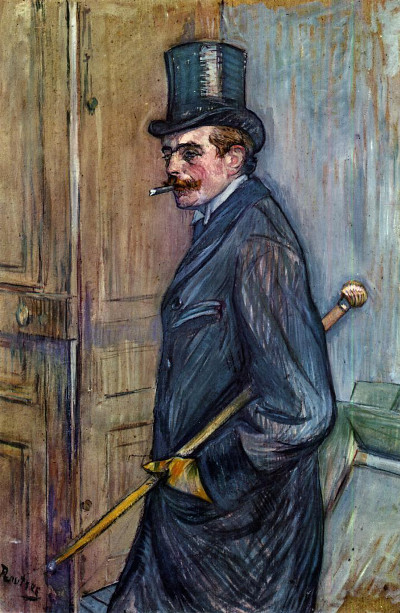This portrait of Louis Pascal was completed by Henri de Toulouse-Lautrec in 1891, during one of his most prolific and successful periods. Louis was his second cousin and they had actually studied together in Paris.
The Pascals held a strong relationship with many members of the Toulouse-Lautrec family, and the former were helped out at around this time after running into financial difficulties. Louis himself was entirely knowledgeable about the arts, but actually worked as an insurance broker. He and Henri would happily socialise together and so would have been entirely comfortable in modelling for this particular portrait in the late 19th century. Henri loved to include friends and family within his paintings, as well as members of his local community from the theatres of Paris. He would create a visual diary of his own life, and he seemed able to socialise with confidence at night time, where society seemed to be more accepting of him. The relationships that the artist held made it easy to arrange some fairly intimate portraits which became some of his best contributions.
Louis Pascal is captured from around the knee level, upwards. He is dressed particularly smartly, underlining his own career within finance. He sports a cigar, which hangs from his mouth in a confident manner. His moustache is thick and bushy, with an auburn tone which continues into his hair. A large black hat completes his look, and he also has red, rosy cheeks which at that time would suggest wealth and health. He wears a long suit with white bow tie which can just be seen from this side angle. A delightful walking stick is held by his left side, with his hand tucked into a pocket. His frame is tall and lean, which perhaps adds to his expression of confidence. Light envelops the right hand side of his face, and behind him we find two doors and a hastily applied wall with only rough brushwork. The artwork may have been completed in Henri's own studio.
This painting is believed to now reside in the south of France, within a museum dedicated to the artist himself. Many of his family portraits came into the possession of his mother who then later passed them on to this institution which continues today to promote his career and make younger generations aware of his popular style and content. Despite working over a century ago, his paintings continue to feel fairly contemporary and fresh, with many continuing to appreciate being able to see into the past life of Parisians during an important time in the history of this city. At that time, Paris led the world in artistic creativity, and Toulouse-Lautrec felt honoured to be a major part of that scene.




